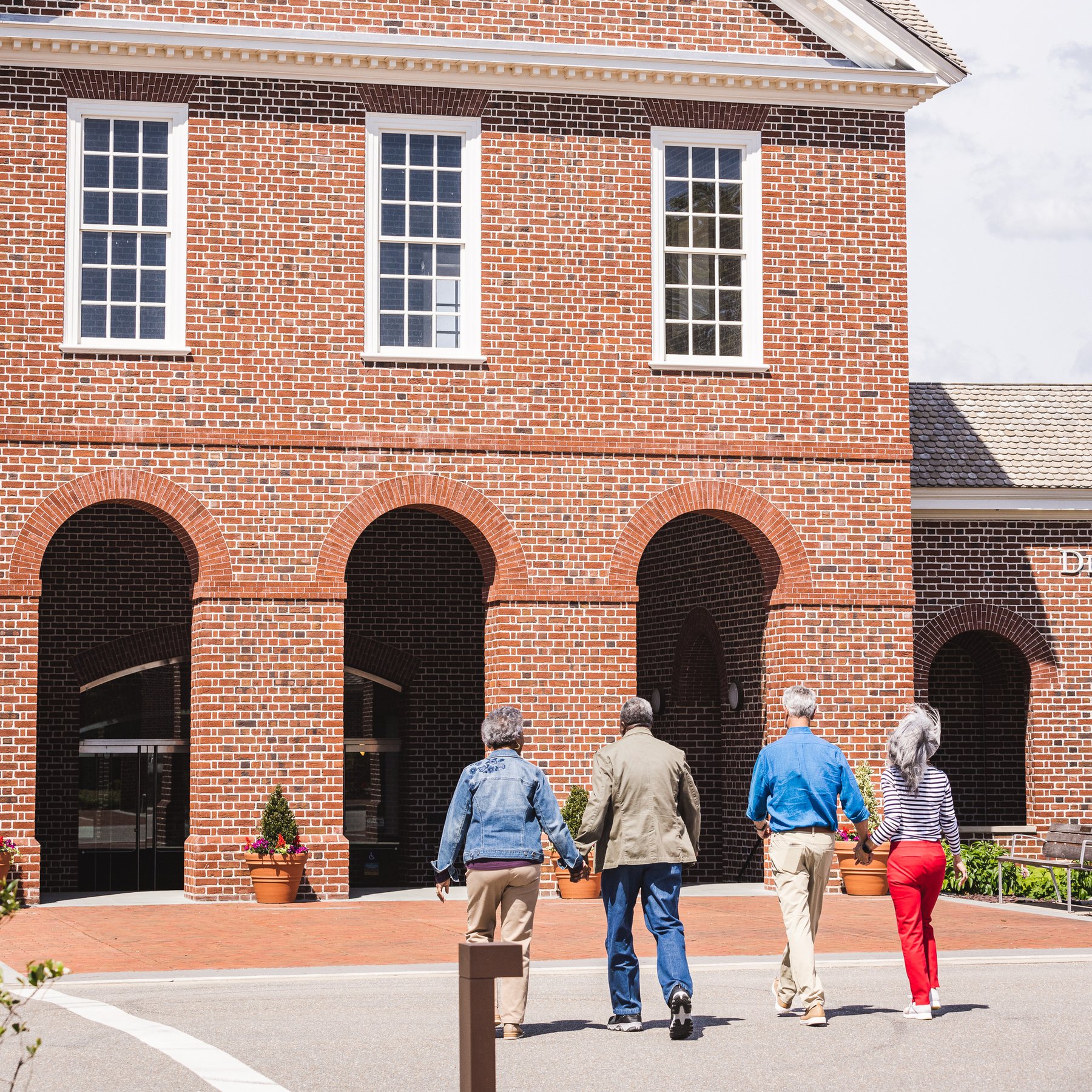
Stitched in Time
On view in the Len and Cyndy Alaimo Gallery
This exhibition is generously funded by The Leonard J. and Cynthia L. Alaimo Endowment for Colonial Williamsburg’s Art Museums, the Jeanne L. Asplundh Textile Exhibitions Endowment and the George Cromwell Trust
Needlework was nearly universal for British and American women in the 18th and 19th centuries. Women across social classes engaged in some form of stitching, whether repairing tears in everyday garments or creating decorative needlework pictures. These skills can be traced back to an education that emphasized sewing as an important facet of women’s role in domestic management.
Though American needlework comes in a variety of forms, it shares a common origin. Our country’s stitching traces its development back to England, to a distinct educational process and a shared set of tools. Even across continents, shared visual culture means that American and English needlework were often inspired by the same themes. By seeking to explore American needlework from its early English roots to its 19th-century height, this exhibition highlights both the great variety and the great similarities found among the form.
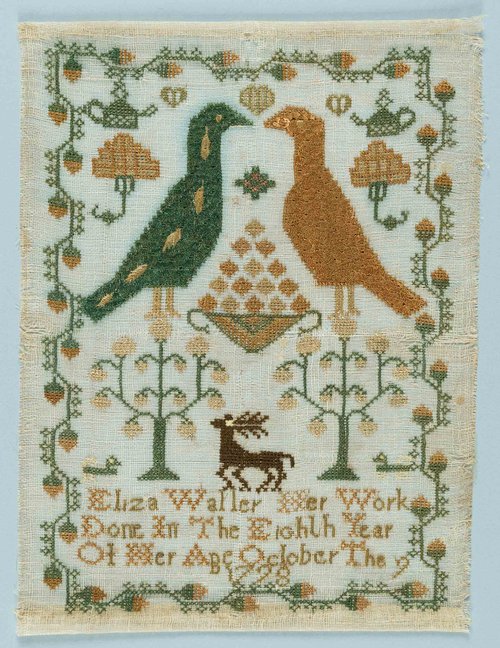
Sampler, by Eliza Waller, America, Virginia, Williamsburg, 1798, silk and linen, 11 ½ x 8 ¾ in, Museum Purchase, multiple donors in memory of Gordon Monroe Ivey III, 2024-1
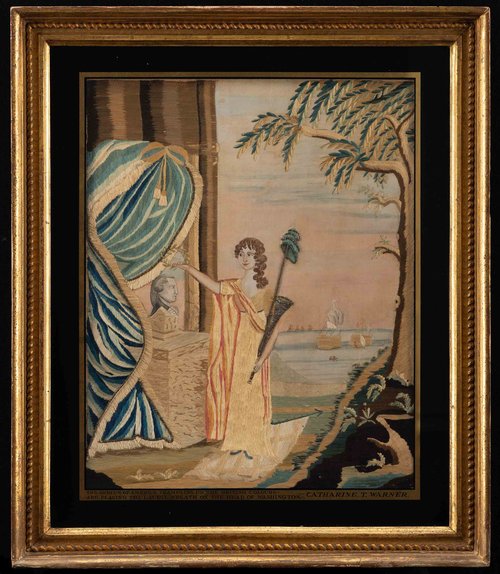
Needlework Memorial, Liberty Crowning Washington, by Catherine Townsend Warner, America, Rhode Island, Warwick, 1809, silk, metallic threads, watercolor, gouache, and ink, Framed: 22 ¼ 19¼in, Gift of Florence R. Kenyon, 1938.604.1
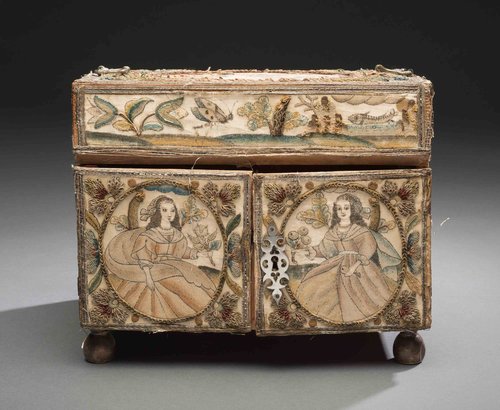
Embroidered Cabinet, England, 1650-1675, silk, paper, metal, glass, paper, and wood, 7½ x 10½ x 8in, 1960-370

Top of needlework box (1960-370)
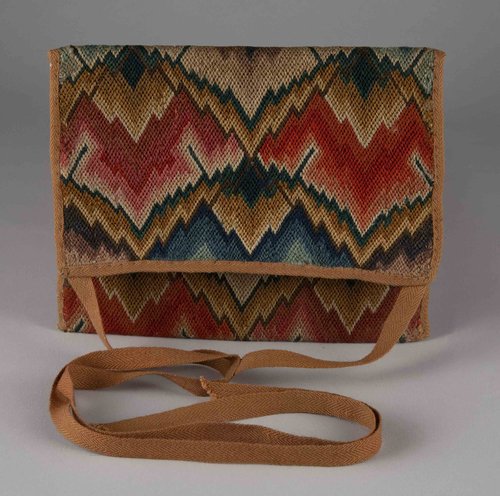
Pocketbook, America or England, mid-18th century, wool, 6¼ x 7⅝in, 1950-256
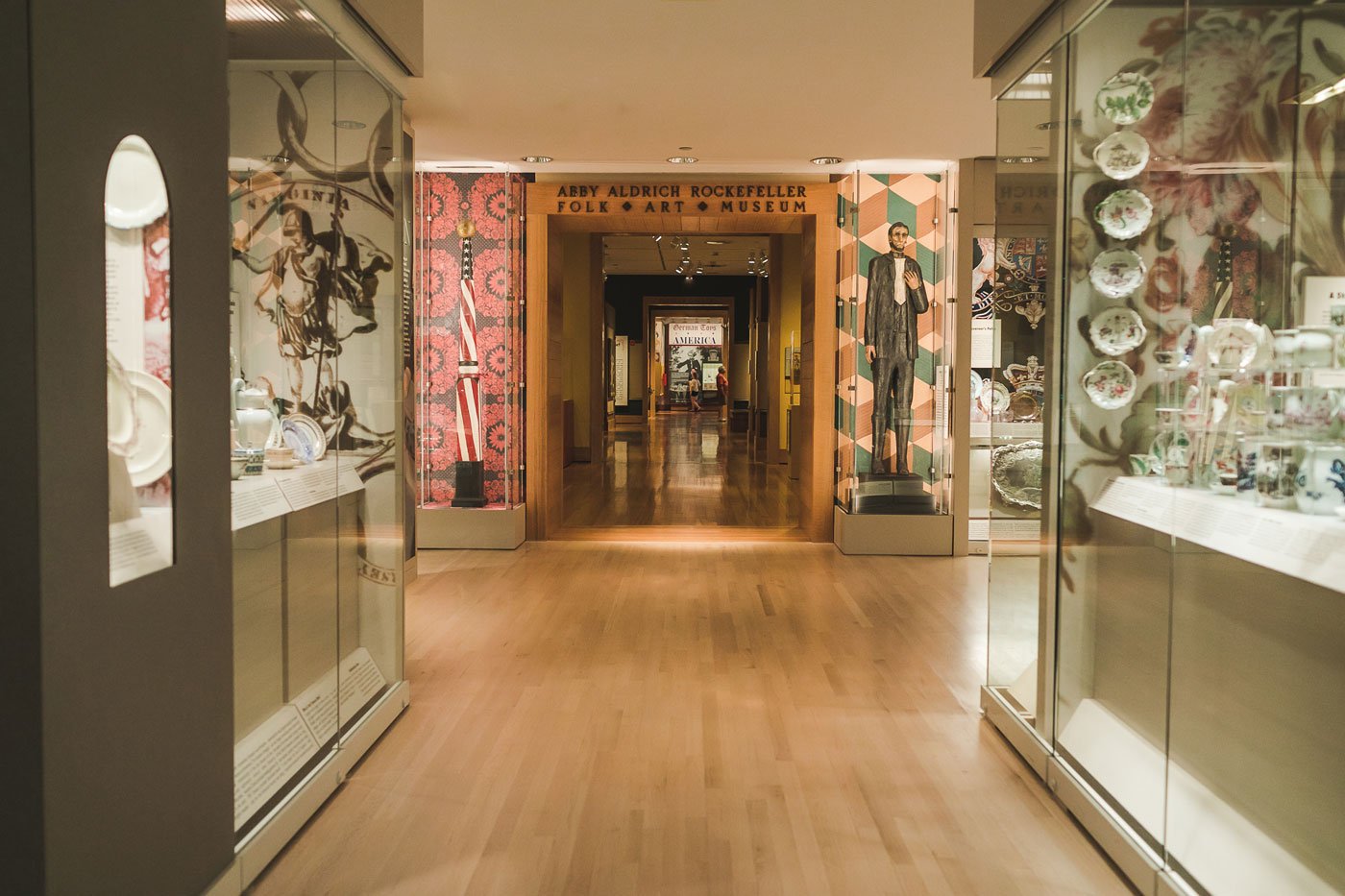
Delve into our Exhibitions Online
Explore our Online Collections to learn more about The Colonial Williamsburg Foundation's vast collections of fine, decorative, mechanical, and folk art.

